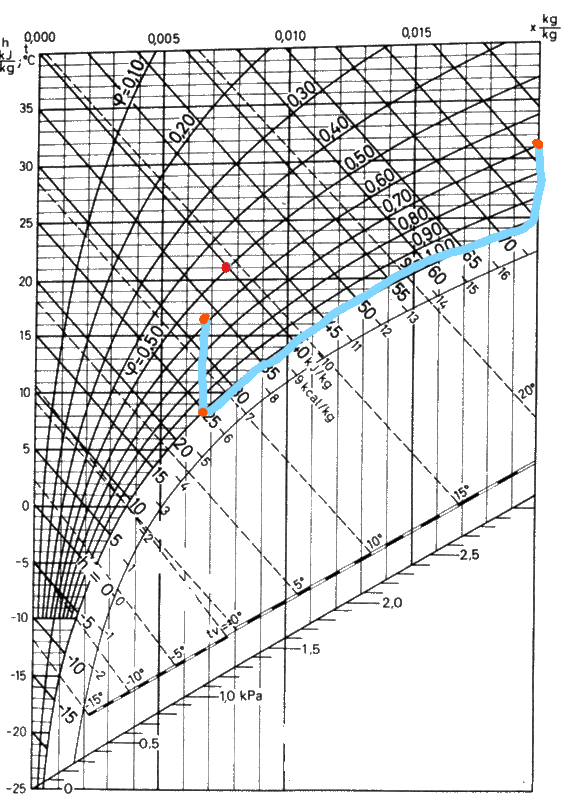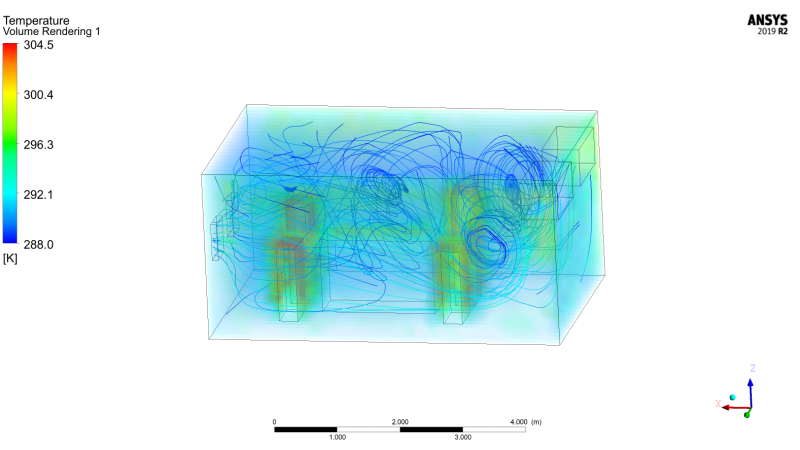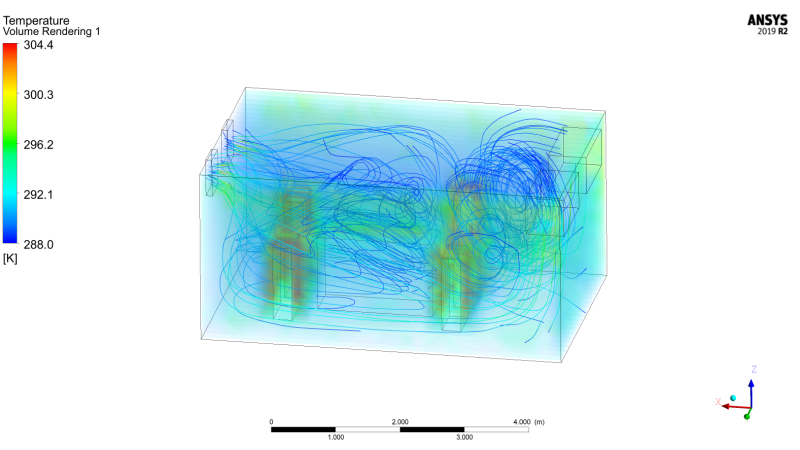johncooling
Electrical
Hi to all,
I am new to the forum, but reading it for quite a while.
I was lucky enough to get a project for HVAC of an operating room for eye surgery, so I am writing to get some advice if possible
It is rather on the small side with ceiling (no false ceiling) at 2.75m, length 5.7m and width 3.7m (so H=9ft L=18ft 8in and W=12ft 2in).
There are 6 people in the room so the latent load=450W and the sensible load=450W.
There are 3 pieces of equipment (microscope, FAKO equipment and anesthesia machine-which is used sporadically) with sensible gain 500W.
Lights 250W.
Calculated cooling load is about 2400W=8190 Btu/hr (21 degrees Celsius internal temp=70F).
I cannot mount ceiling diffusers because of the ceiling height and already mounted lights (and the doctors do not want them over their head), so I am planning on putting the diffusers with HEPA filters like on the picture attached. I would use an 100% OA AHU with dx-coil and reheater which will be positioned on the terrace which is 1m above ground so the device can be serviced from the backyard. The ducts I am planning to use are preinsulated PU.
Weather data:
Altitude: 87m
(august)
Outdoor dry bulb: 32 degrees Celsius
Outdoor wet bulb: 23 degrees Celsius
I am concerned that the surgical team is too close to the outlets, so maybe I will turn the diffusers (with HEPA filters) downwards or straight out? Also, to find the right flow and supply air temperature to meet the requirements (12ACH minimum if 100%OA used=850m3/hr), but not to blow too cold or high velocity air onto the surgical team. Thinking of it to be in range from 800-1600m3/h variable with four 0.6mx0.6 diffusers with H14 HEPA filters.
Am I planning this right? Any ideas or comments are welcome.
Regards,
Johnny
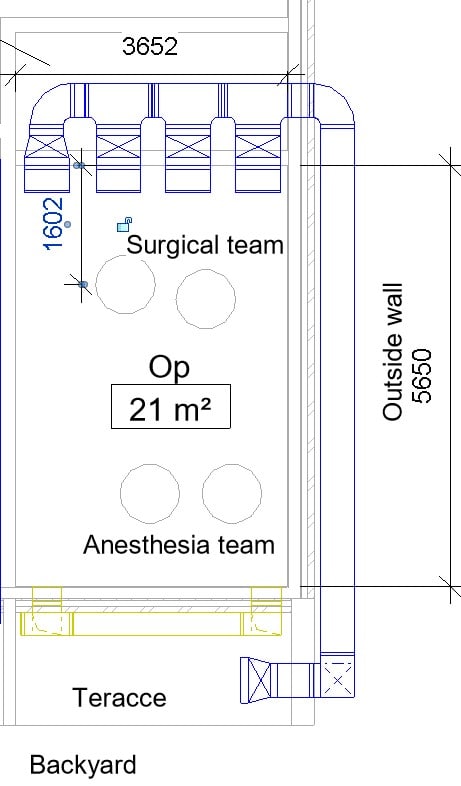
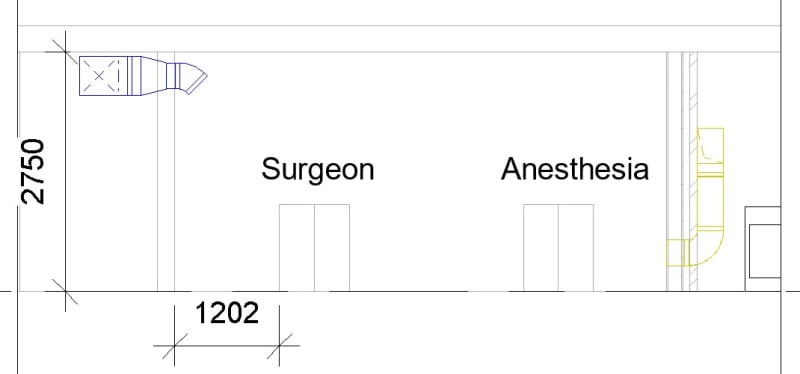
I am new to the forum, but reading it for quite a while.
I was lucky enough to get a project for HVAC of an operating room for eye surgery, so I am writing to get some advice if possible
It is rather on the small side with ceiling (no false ceiling) at 2.75m, length 5.7m and width 3.7m (so H=9ft L=18ft 8in and W=12ft 2in).
There are 6 people in the room so the latent load=450W and the sensible load=450W.
There are 3 pieces of equipment (microscope, FAKO equipment and anesthesia machine-which is used sporadically) with sensible gain 500W.
Lights 250W.
Calculated cooling load is about 2400W=8190 Btu/hr (21 degrees Celsius internal temp=70F).
I cannot mount ceiling diffusers because of the ceiling height and already mounted lights (and the doctors do not want them over their head), so I am planning on putting the diffusers with HEPA filters like on the picture attached. I would use an 100% OA AHU with dx-coil and reheater which will be positioned on the terrace which is 1m above ground so the device can be serviced from the backyard. The ducts I am planning to use are preinsulated PU.
Weather data:
Altitude: 87m
(august)
Outdoor dry bulb: 32 degrees Celsius
Outdoor wet bulb: 23 degrees Celsius
I am concerned that the surgical team is too close to the outlets, so maybe I will turn the diffusers (with HEPA filters) downwards or straight out? Also, to find the right flow and supply air temperature to meet the requirements (12ACH minimum if 100%OA used=850m3/hr), but not to blow too cold or high velocity air onto the surgical team. Thinking of it to be in range from 800-1600m3/h variable with four 0.6mx0.6 diffusers with H14 HEPA filters.
Am I planning this right? Any ideas or comments are welcome.
Regards,
Johnny



